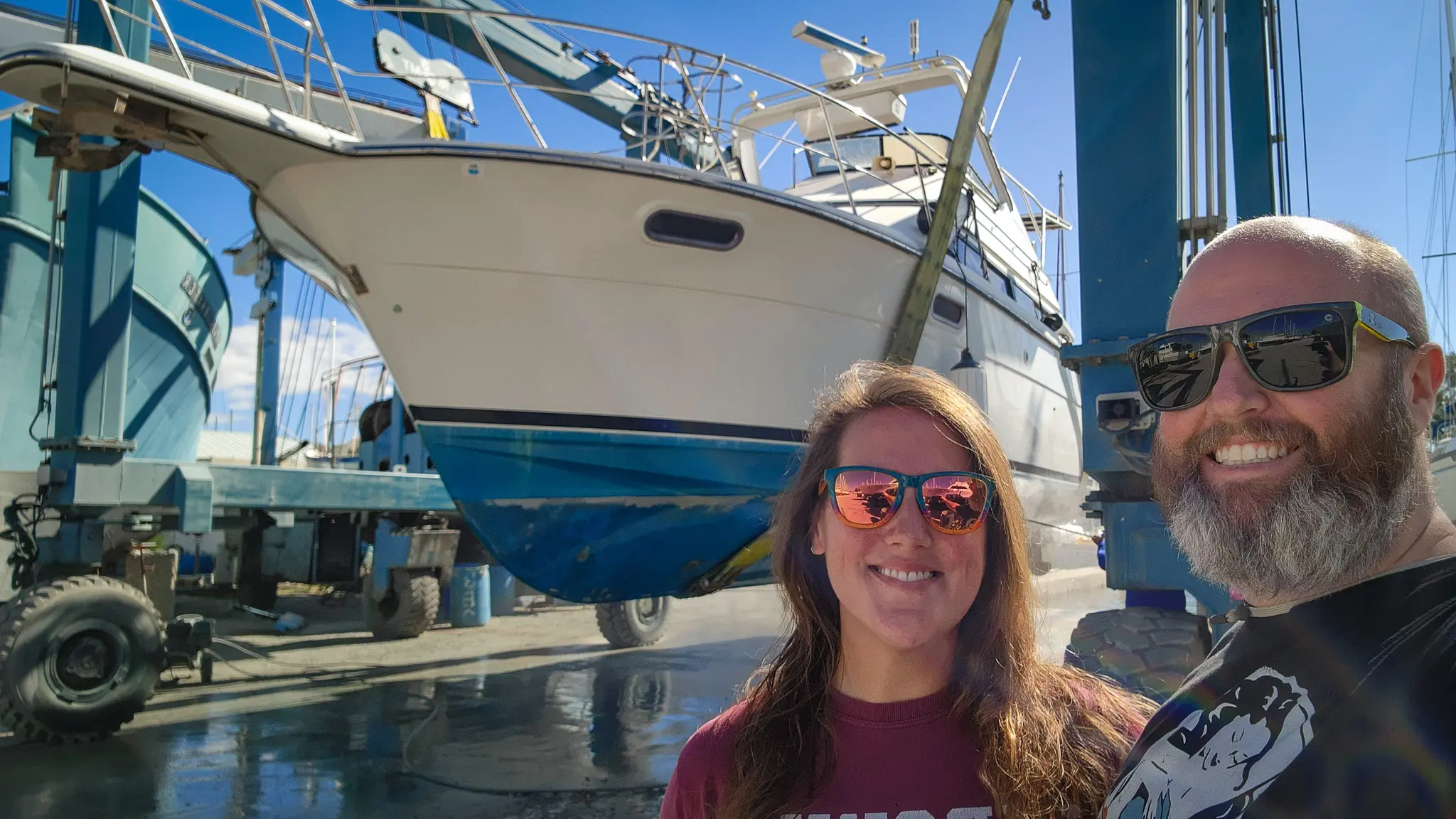Arriving at the DIY Boat Yard
After our ~200 nm journey to get our new boat a final haul out, followed by 12 days of anchoring and waiting nearby, we finally got the call to come to the boat yard. Just as we arrived to the boat yard and marina entrance and were about to turn in, we got another call – the boat that had just left the yard needed to come back because it was taking on water. We tried to anchor in the area we were now in, but winds picked up to 20-25 mph, and the current was strong. After a few hours battling the conditions, we decided to return to our protected cove.
No sooner than our return, we got the call to come back. We turned around, and an alarm went off – our one functioning engine was overheating. It was after 4 PM, and the yard closed at 5 PM. Frantically, I opened the engine bay while Tom dropped the anchor just outside of the channel. I notice the serpentine belt has torn, inform Tom, find the spare, and he swapped it out in record time.

We head out again, and Tom limps into the boat yard’s haul out slip and we tie off. It was his first time on land in 16 days!
The old sailors were shocked and impressed by Tom’s skills navigating the tight channel peppered with sunken ships – on only one engine!
The Haul-out Process
When we returned the following morning, we watched in fascination as the massive Travelift drove over to carry our boat out of the water.
1. Tie-up to Slip at the Haul Out Location

We coordinated with the boat yard our arrival to be hauled out, and there were several people waiting to assist us to tie up.
Our boat sat in the slip overnight, and we were asked to spend the night elsewhere.
Before leaving, we unloaded our belongings because it’ll be more difficult to do so once the boat is on the hard.
2. Placement of Slings


Our boat had small plaques in four places, designating where the slings should be placed to lift the boat out. If our boat did not come with these, the boat yard would decide where to place the slings, taking into consideration the center of mass and any underwater gear (propellors, shafts, etc.) and instruments (depth finders, sensors, etc.) that may be damaged by the slings.
The Travelift was driven over to our boat, and the massive slings were lowered into the water in front of the boat. Tom and three boat yard employees pulled the boat forward over the slings, while the Travelift moved backwards. The slings were then adjusted to sit in the correct spot. The slings were then tightened around the boat.
3. Haul Out


The boat was lifted out of the water and brought to hover over the concrete immediately in front of the slip. At this yard, the haul out cost $300 plus tax.
4. Powerwash


The bottom of our boat was power sprayed off, which removed most of the growth that had accumulated and also quite a bit of the bottom paint. There was a large drain in the concrete of this area, where the paint was rinsed into. The powerwash and environmental fee were $95 each, plus tax.
4. Move via Travelift


The Travelift then slowly carried the boat in the slings to our designated spot, and backed it in.
5. Blocking


The boat yard used a forklift to move three huge concrete blocks underneath the hull. Scrap wood was placed on top of the concrete, before it was lowered onto the blocks. Afterwards it was “blocked” with six adjustable supports to prevent the boat from tipping to one side. Blocking of our boat cost $95, plus tax.
6. Removal of Travelift Slings after the Haul Out


After the boat was securely supported, the slings were removed and the Travelift drove away.
7. Removal of Barnacles (and other growth)

The final step of having our boat hauled out and set on the hard is to remove any barnacles and other growth that was not removed by the power wash.
Our understanding is that it’s significantly easier to do immediately after the boat has come out of the water, as opposed to waiting until later.
We used drywall taping knives and drywall putty knives to remove the barnacles. They came off with almost no effort!
